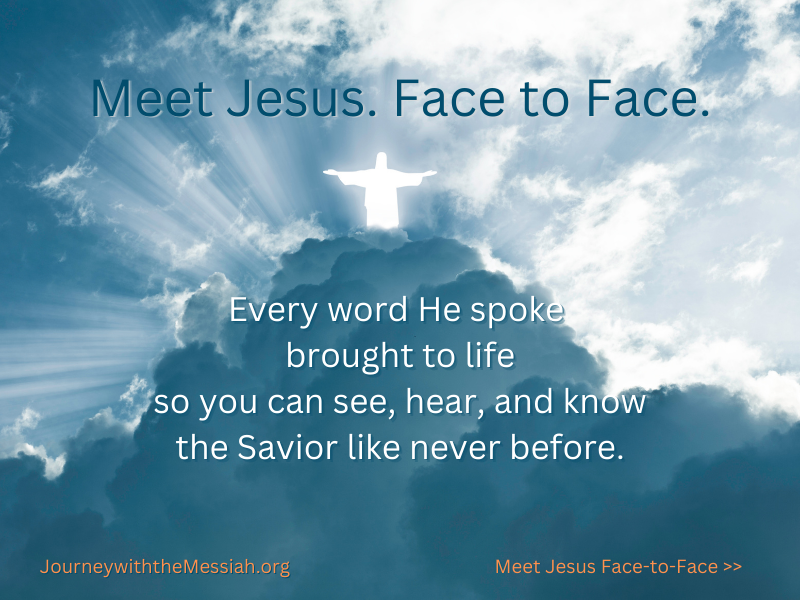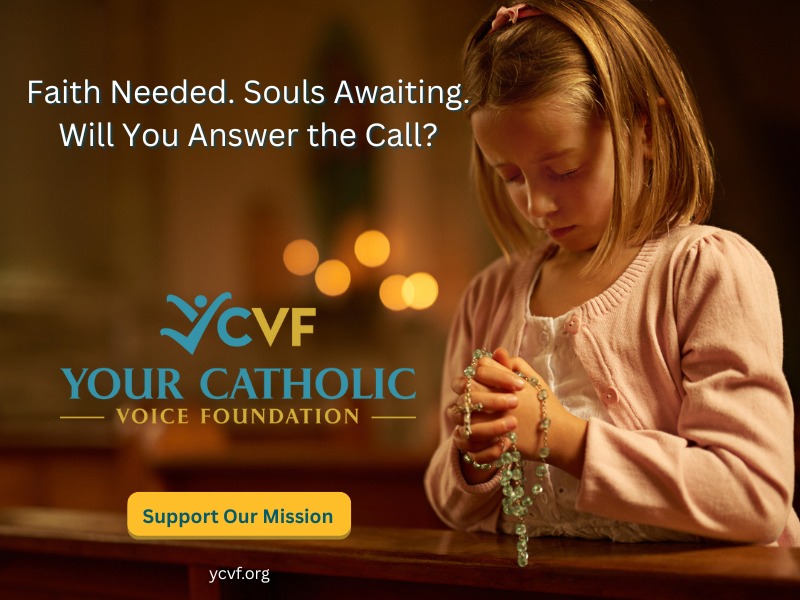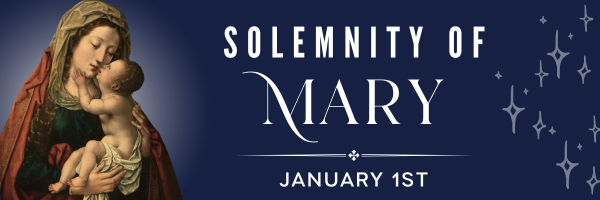 Dear readers, Catholic Online was de-platformed by Shopify for our pro-life beliefs. They shut down our Catholic Online, Catholic Online School, Prayer Candles, and Catholic Online Learning Resources essential faith tools serving over 1.4 million students and millions of families worldwide. Our founders, now in their 70's, just gave their entire life savings to protect this mission. But fewer than 2% of readers donate. If everyone gave just $5, the cost of a coffee, we could rebuild stronger and keep Catholic education free for all. Stand with us in faith. Thank you. Help Now >
Dear readers, Catholic Online was de-platformed by Shopify for our pro-life beliefs. They shut down our Catholic Online, Catholic Online School, Prayer Candles, and Catholic Online Learning Resources essential faith tools serving over 1.4 million students and millions of families worldwide. Our founders, now in their 70's, just gave their entire life savings to protect this mission. But fewer than 2% of readers donate. If everyone gave just $5, the cost of a coffee, we could rebuild stronger and keep Catholic education free for all. Stand with us in faith. Thank you. Help Now >
Film Review: "Henry Poole is Here", Hope Can Save You
FREE Catholic Classes
Henry Poole finds out that in the midst of the stuff of daily life, with all of its pain and struggle, hope really can save you. A truly good film.
Highlights
Catholic Online (https://www.catholic.org)
8/11/2008 (1 decade ago)
Published in U.S.
CHESAPEAKE, Va. (Catholic Online) - In the very beginning of this film it is the soundtrack which signals the subject which the story line will consider, the corrosive power of despair written large in the life of a profoundly depressed man. The Eels song "Love of the Loveless", in both tonal quality and lyrics seems to have been written for Henry Poole as the first verse indicates: "Don't got a lot of time, Don't give a damn, Don't tell me what to do, I am the man, If there's a God up there, Something above, God, shine your light down here. Shine on the love, Love of the loveless".
Henry is a man in deep existential angst. Luke Wilson plays the role brilliantly with a face, demeanor and carriage which is literally, as they say, "right out of central casting". Later in the film we will learn that Henry has received a terminal medical diagnosis which sent him into the latest downturn. However his hopelessness and despair have been growing inside of him for years, draining away the life. He, like so many people, is a member of the walking wounded, dragging the pain of unresolved childhood hurt and trauma like a ball and chain behind him. The chip on his shoulder has grown so big that he can no longer stand up straight it seems and his downcast eyes see only the ground. In a last ditch effort to find some meaning, or at least a place to crawl into and stew in his depression before his end, Henry tries to go home.
We find out in the opening scene that he had tried to purchase what we will later learn was his childhood home. It was the last place he remembered being happy. That was obviously a long time ago. For this man we meet in the beginning of this truly good film has had the life sucked out of him. All that is left is a hollow shell. Unable to purchase the home he wanted he settles instead for a dark and desolate one down the road. He tells the Realtor to offer the sellers what they asked for, even against her protests. When she later comes to visit Henry who was lying both unshaven and drunk in the back yard of the dreary home, she explains that she had it painted and re-stuccoed at no cost to him. Henry chides her, telling her that she should not have done it because "I won't be here for long". In addition, he points out that the stucco job was done poorly because there is a water stain on the corner of the back wall. It is that stain which becomes the intriguing symbolic center of this film.
Through the Realtor, the whole neighborhood would soon hear that their new neighbor won't be there long. They will not leave him alone with kindness and concern. First to enter into the stark, dreary and gritty world of Henry Poole is "Esperanza", played with brilliance by Adrianna Barrazza. She brings her new neighbor Tamales and attempts to see inside the home. At first the viewer believes it is just nosiness. However, it is much more. She is also the first to discover an Image in that water stain which she asserts is the "face of God", the face of Christ. Henry of course thinks the claim to be an utter absurdity. Just what it is and how people respond to the image on the wall becomes the recurring symbolic center for this marvelous film about love, hope, and redemption.
Sadly, some of the reviews I have read about this film get stuck on the image on the Wall of the house. I think that in so doing, they reveal both a shallow analysis and a possible animus against anything which even smacks of religion in an increasingly secularized and hostile cultural environment. We have all seen the absurd claims of cheet-ohs for sale on E-Bay allegedly in the shape of a crucifix.Sadly such nonsense has also tended to close our eyes to the wonders of faith in an age which has lost its way. This film is not so much about the image on the wall as it is about the Image of God in each one of the major characters. It is these well developed characters who reveal for the viewers a mirror into our own lives and our own disordered attitudes. They also help to reveal the true miracle presented in this film -that of our capacity to love and to draw one another out of despair and back to life through offering hope. When we move out of our self centeredness, and through faith and hope practice authentic care and concern for our neighbor, we find the Image restored in each one of us.
As this fine film unfolds, the characters are beautifully developed. Esperanza, whose name literally means hope, becomes a central figure. She is a woman of deep faith who has herself suffered true loss. The house that Henry buys was once owned by the only love of her life. He died of a heart attack and was found on the kitchen floor. That is why she wanted to see the inside again. Esperanza is an example of how suffering can bear the fruit of compassion in the person who embraces it as a tutor and learns at its table. She enters into Henry's suffering, even enduring his verbal abuse in a poignant and powerful scene, all without complaint. The Image she sees so clearly on the wall is in fact a reflection of the presence of love Incarnate right within her. She is only one of a cast of well developed characters who make this film a triumph of character development.
Henry's efforts to self medicate with copious amounts of alcohol requires frequent trips to the local store. There he meets Patience, the quirky and endearing check out girl. In fact, he can't avoid her.She is played very well by Rachel Seiferth, a true talent to watch for the future. She also embodies her name. Her "miracle" in this film is also deeper than the recovery of her physical sight. Early on Patience perceives the crippling effects of Henry's despair and breaking with typical protocol not to speak personally to people checking out in her line asks him why he is so sad and angry. She has the courage to engage a fellow human being in the midst of his self destructive cycle. Like Esperanza she takes his ungrateful responses without returning the abuse. She perseveres in her concern for Henry. Her miracle scene at the wall is one of the most touching scenes in this film. Her later dialogue with the skeptical Henry on her own "choosing to believe" and the power of choice in our lives is also quite telling.
Beautiful Radha Mitchell plays the young mother next door, Dawn, who was abandoned by her husband and left with a traumatized daughter who no longer speaks.She will become, as her name implies, the dawn of love in Henry Poole's life. Her daughter, Millie is played by young Morgan Lily whose haunting and hollow eyes are nothing short of extraordinary. She is an intriguing child who reminds Henry of his own difficult childhood. Oddly, she records conversations on a cassette tape player. She records the dialogues in Henry's back yard and they become the frame for much of the movie. She also recovers her voice, twice, once when she touches the Image on the wall, and, again, at the end of the film, when she encounters the power of enduring love. One scene where she, her mother and the changing Henry play together in the water in the back yard captures the essence of the healing quality of play for people of every age. Finally, comedian George Lopez does a surprisingly good job playing Father Salazar, the representative of the Church who made me glad to be a member of the Catholic Clergy myself.
The love which grows between Henry and Dawn is a tender testament to the saving power of all authentic human love. In an age which has cheapened love it is a refreshing re-presentation of the most powerful force on earth. The dinner scene on the roof when Henry tells Dawn that every morning since his diagnosis he had awakened thinking about how much time he has left but that that morning he awakened and thought about her, was beautifully written and acted. I am intentionally avoiding telling the story line of this film because, with its twists, turns, developments and evolution, it would take far longer than I have in this review. Beside which, I want my readers to go to see this film.
"Henry Poole is Here" is a good movie, in the deepest sense of the word. It is well acted, well directed and it is not afraid to address "goodness" between human persons. Henry's personal odyssey and internal evolution as he tries to fight his own demons of despair and then finally surrender to hope is a message which is desperately needed in this hour. True, he fights the efforts to attribute the alleged Image on the wall to miraculous intervention. However, that Image is really the subtext of this film. It opens up the deeper meaning of life, love, neighborliness, empathy, compassion, real miracles and, most of all the saving power of hope.
At the climax of Henry's struggles and right before the surprising and powerful ending of this good movie, Henry's anger gets the better of him. However, rather than turning it inward and giving into depression, he expresses his anger outwardly by attempting to destroy the Wall of the house on which the Image has appeared. All of his efforts at removing this Image throughout the entire film have been unsuccessful. So, finally he literally takes a sledge hammer to it and the Wall collapses on top of him. Before it does he cries out to the pilgrims who have come to pray "Hope can't save you". Henry awakens in a hospital room surrounded by his neighbors. The ending scene and the twist it represents is fantastic. Hope does save Henry Poole and it changes the wording on the wall. To find out what that means, go see the film, scheduled for release on August 15, 2008.
I highly recommend this wonderful movie. It is an example of how the medium of film can be used to communicate the deeper meaning of human life. This is not a "religious" movie. It is a powerfully human movie; revealing the goodness of human emotions and experiences. It addresses on screen the truth that we were made for one another and made out of and for love.
Apparently this film reveals a new approach for the Director, Mark Pellington. The New York Times printed a story Sunday which noted that his beloved wife died from a ruptured colon leaving him and his then 2 ½-year-old daughter all alone. Having read that article helped me to understand even more how he was so successful in capturing both the depth and the mystery of human suffering. He has lived through it himself. And, he has learned, as we all must, that the past can either be a tutor or a millstone. The choice is ours. Pain has made this Director an even greater artist as it so often does. He has painted this film from the ink well of his own hurt and he has done a brilliant job.
From its stark, gritty darkness in the beginning through its well developed characters and throughout its turns and twists all the way through to its surprising end, "Henry Poole is Here" is a testimony to the power of hope. He probably does not know it, but the message of Mark Pellington's latest film affirms the teaching of Pope Benedict XVI's second encyclical letter which was entitled "Saved in Hope". Henry Poole finds out that in the midst of the stuff of daily life, with all of its pain and struggle,hope really can save you.
---
'Help Give every Student and Teacher FREE resources for a world-class Moral Catholic Education'
Copyright 2021 - Distributed by Catholic Online
Join the Movement
When you sign up below, you don't just join an email list - you're joining an entire movement for Free world class Catholic education.
An Urgent Message from Sister Sara – Please Watch
- Advent / Christmas
- 7 Morning Prayers
- Mysteries of the Rosary
- Litany of the Bl. Virgin Mary
- Popular Saints
- Popular Prayers
- Female Saints
- Saint Feast Days by Month
- Stations of the Cross
- St. Francis of Assisi
- St. Michael the Archangel
- The Apostles' Creed
- Unfailing Prayer to St. Anthony
- Pray the Rosary
![]()
Copyright 2026 Catholic Online. All materials contained on this site, whether written, audible or visual are the exclusive property of Catholic Online and are protected under U.S. and International copyright laws, © Copyright 2026 Catholic Online. Any unauthorized use, without prior written consent of Catholic Online is strictly forbidden and prohibited.
Catholic Online is a Project of Your Catholic Voice Foundation, a Not-for-Profit Corporation. Your Catholic Voice Foundation has been granted a recognition of tax exemption under Section 501(c)(3) of the Internal Revenue Code. Federal Tax Identification Number: 81-0596847. Your gift is tax-deductible as allowed by law.











